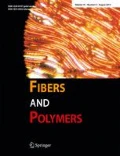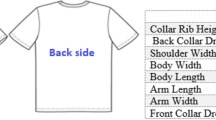Abstract
Little work has been done in the past on how clothing thermal and moisture transport properties affect human comfort sensations during different periods of an exercise. In this work, by correlating the thermal and moisture transport properties of T-shirt fabrics and garments with the comfort sensations during different stages of exercises, we found that thickness, thermal insulation and warm/cool feeling of the T-shirt fabrics are important to warmth sensation, skin wetness sensation and overall comfort throughout the entire period of exercise and immediately after the exercise. Water vapor transmission properties of T-shirt fabrics or garments are not important to comfort sensations at the start of the exercise, but become an important factor to comfort sensations in the middle of the exercise up to the resting period after the running exercise, probably due to the fact that sweating occurs during these periods. Fabric water absorption and air permeability are not significant factors at the start and during the exercise, but are important after exercise, probably because these properties determine how quickly the skin can be dried after sweating.
Similar content being viewed by others
References
J. L. Spencer-Smith,Cloth. Res. J.,4(3), 126 (1976).
D. L. Ingram and L. E. Mount in “Man and Animals in Hot Environments”, (K. E. Schaefer Ed.), pp.5–23, Springer, Berlin/Heidelberg/New York, 1975.
A. Kwon, M. Kato, H. Kawamura, Y. Yanai, and H. Tokura,Eur. J. Appl. Physiol.,78, 487 (1998).
J. F. Fuzek,Ind. Eng. Chem. Prod. Res. Dev.,20(2), 254 (1981).
R. N. DeMartino, H. N. Yoon, and A. Buckley,Text. Res. J.,54(9), 602 (1984).
D. M. Scheurell, S. M. Spivak, and N. R. S. Hollies,Text. Res. J.,55(7), 394 (1985).
Y. Li, J. H. Keighley, J. E. McIntyre, and I. F. G. Hampton,J. Text. Ins.,82(3), 277 (1991).
S. Yoo and R. L. Barker,Text. Res. J.,75(7), 531 (2005).
J. Fan and Y. Chen,Meas. Sci. Techn.,13, 1115 (2002).
J. Fan and X. Qian,Eur. J. Appl. Physiol.,92, 641 (2004).
B. W. Olesen, “Thermal Physiology”, pp.33–38, Raven Press, New York, 1984.
Author information
Authors and Affiliations
Corresponding author
Rights and permissions
About this article
Cite this article
Kar, F., Fan, J., Yu, W. et al. Effects of thermal and moisture transport properties of T-shirts on wearer’s comfort sensations. Fibers Polym 8, 537–542 (2007). https://doi.org/10.1007/BF02875877
Received:
Revised:
Accepted:
Issue Date:
DOI: https://doi.org/10.1007/BF02875877




